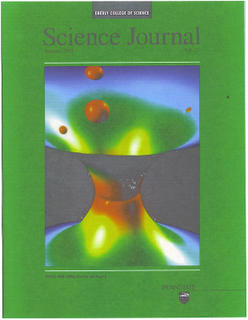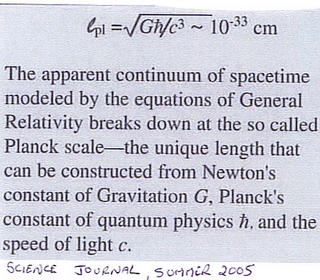And so now we may say that our account of the universe has reached its conclusion. This world of ours has received and teems with living things, mortal and immortal. A visible living thing containing visible things, and a perciptible God, the image of the intelligible Living Thing. Its grandness, goodness, beauty and perfection are unexcelled. Our one universe, indeed, the only one of its kind, has come to be.
WMap currently expressed, has some explaining to do. While they talk about ekroptic universe and such, such cyclical natures need some reference with which to speak, in order for such idealizations and perspective form around the information WMap has currently released.
The fifth element, i.e., the quintessence, according to Plato was identified with the dodecahedron. He says simply "God used this solid for the whole universe, embroidering figures on it". So,I suppose it's a good thing that the right triangles comprising this quintessence are incommensurate with those of the other four elements, since we certainly wouldn't want the quintessence of the universe to start transmuting into the baser subtances contained within itself!
Higher abstractness, in the case of leaving euclidean perspective, are part of the realization when you look at the WMAP, that is being presented. While sound implications are being implied, they are necessary if it is understood the role they will play in such analogies of a larger global pewrspectve then the one seen in how gaussian coordinates and curvatures are implied, in Omega features, and critical density.
A Finite Dodecahedral Universe
According to the team, who published their study in the 9 October 2003 issue of Nature, an intriguing discrepancy in the temperature fluctuations in the afterglow of the big bang can be explained by a very specific global shape of space (a "topology"). The universe could be wrapped around, a little bit like a "soccer ball", the volume of which would represent only 80% of the observable universe! (figure 1) According to the leading cosmologist George Ellis, from Cape Town University (South Africa), who comments on this work in the "News & Views" section of the same issue: "If confirmed, it is a major discovery about the nature of the universe".
So having a greater perspective on this kind of mapping is necessary. While I reference tunneling and such, implicate bee's travelling or satelittes using pathways of least resistance, how does such states have been reached, if you did not have the perspective that is necessary in seeing how the universe is laid out geometrically?
Scientists Get Glimpse of First Moments After Beginning of Time by DENNIS OVERBYE
"If this holds up to the test of time, it's a real landmark," said Max Tegmark, a cosmologist and cosmic microwave expert at M.I.T. "I really feel like the universe has given up one more clue," he said.
The quantum gravity issues implored, and speculated, have a diverse model selection with which to talk about? John Baez's view came up when I seen the model in which he choose for such understanding. Having seen the "membrane" idealizations used in qauntum gravity models, helped with the perspective that he used, but like Plato his definition fell short to me of the substructure(a discrete meaasure in bubble facets) of the cosmo that would relegated some model, to perfect our view microscopically, as well as macroscopically.
Tegmark and others disproved this, so what is the nature of the cosmo in question, and it's shape? So having understod the idealization of flat gemetries of the universe, how could such negative features be understood as the hyperbolic understanding became part and parcel of GR in our understanding of the gravity issues?
With the discovery of sound waves in the CMB, we have entered a new era of precision cosmology in which we can begin to talk with certainty about the origin of structure and the content of matter and energy in the universe.-Wayne Hu
Such analogies were very important in raising our understanding of what might have been seen in the membrane ideals of how gravity could act in bubble boundaries conditions. While such faces might have been understood in such analogies of John Baez's, a spherical harmonics would have had to been much smoother in our understanding?
Imploring the analogies and models in this respect made it much easier to see on another level, in non euclidean realities. Further then, the understanding of gaussian coordinates. You knew this was part and parcel of a larger picture understood in GR?
The Sound of Gravitational Waves
We can't actually hear gravational waves, even with the most sophisticated equipment, because the sounds they make are the wrong frequency for our ears to hear. This is similar in principle to the frequency of dog whistles that canines can hear, but that are too high for humans. The sounds of gravitional waves are probably too low for us to actually hear. However, the signals that scientists hope to measure with LISA and other gravitational wave detectors are best described as "sounds." If we could hear them, here are some of the possible sounds of a gravitational wave generated by the movement of a small body inspiralling into a black hole.
So there is a culmination in my views as I now look at the new WMap presented. A greater understanding implored in geometric realization, that had to be taken down to the microscopic where quantum gravity existed, yet, the geometry used, what new math would this be? It was encapsulted in the overall understanding of cyclical natures.
Is there such a thing, as isometrical relations of orbitals, in cosmological designs? A Classical definition of the Quantum World perhaps?
Some patterns are telling to me of the way in which the universe, and the galaxies in which had formed, would have followed some geometrical all inclusive pattern, that we see unfolding from place to place, and assigning, specific polarization points within the view of the WMAP.
Now, look at the map below.
The WMAP (Wilkinson Microwave Anisotropy Probe) mission is designed to determine the geometry, content, and evolution of the universe via a 13 arcminute FWHM resolution full sky map of the temperature anisotropy of the cosmic microwave background radiation. The choice of orbit, sky-scanning strategy and instrument/spacecraft design were driven by the goals of uncorrelated pixel noise, minimal systematic errors, multifrequency observations, and accurate calibration. The skymap data products derived from the WMAP observations have 45 times the sensitivity and 33 times the angular resolution of the COBE DMR mission. The WMAP mission characteristics are summarized in the table below.
So by using information in the Chladni plate exhibit within this site, it becomes a interesting picture when such "spectrum analysis" make themselves representable in "color" as a variation of the landscape.
The temperature fluctuations of the Cosmic Background Radiation may be decomposed into a sum of spherical harmonics , much like the sound produced by a music instrument may be decomposed into ordinary harmonics. The "fundamental" fixes the height of the note (as for instance a 440 hertz acouctic frequency fixes the "A" of the pitch), whereas the relative amplitudes of each harmonics determine the tone quality (such as the A played by a piano differs from the A played by a harpsichord). Concerning the relic radiation, the relative amplitudes of each spherical harmonics determine the power spectrum, which is a signature of the geometry of space and of the physical conditions which prevailed at the time of CMB emission.
But if you are really interested in the way we see the universe how would such patterns illustrate what is being shown in the WMAP. A Chladni plate perhaps as spoken in reference. I needed a model with which to work the whole geometrical picture.
If you sprinkle fine sand uniformly over a drumhead and then make it vibrate, the grains of sand will collect in characteristic spots and figures, called Chladni patterns. These patterns reveal much information about the size and the shape of the drum and the elasticity of its membrane. In particular, the distribution of spots depends not only on the way the drum vibrated initially but also on the global shape of the drum, because the waves will be reflected differently according to whether the edge of the drumhead is a circle, an ellipse, a square, or some other shape.
In cosmology, the early Universe was crossed by real acoustic waves generated soon after Big Bang. Such vibrations left their imprints 300 000 years later as tiny density fluctuations in the primordial plasma. Hot and cold spots in the present-day 2.7 K CMB radiation reveal those density fluctuations. Thus the CMB temperature fluctuations look like Chaldni patterns resulting from a complicated three-dimensional drumhead that
See:




